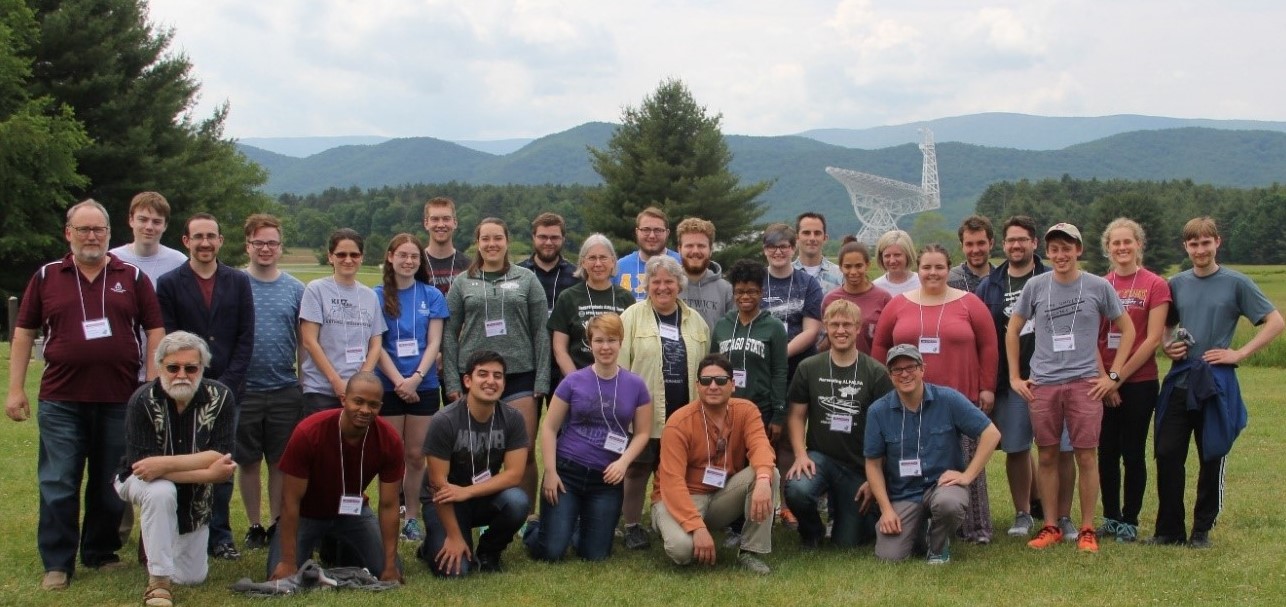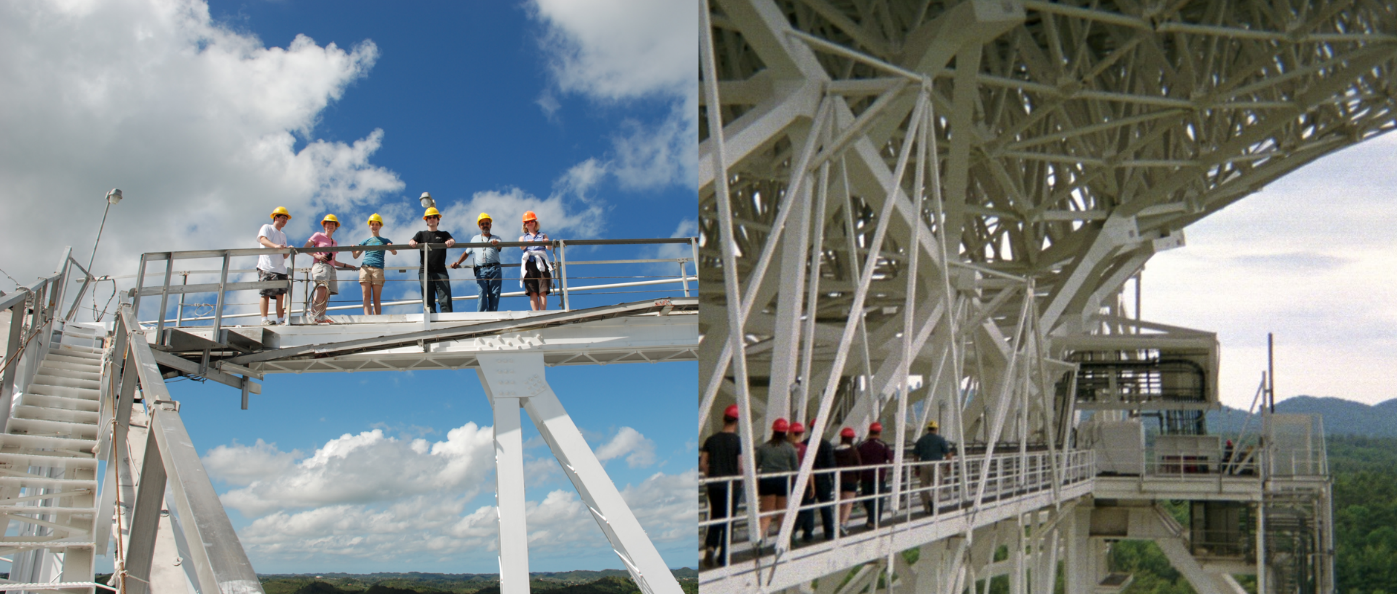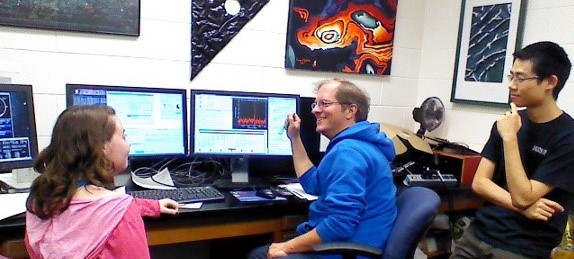The Undergraduate ALFALFA Team Model: Undergraduate Research within a Community of Practice
Mary Crone-Odekon Skidmore College

For many undergraduates, research experience means one of two things: working with a professor’s research group at their home institution or participating in a summer project at another institution through a program like Research Experiences for Undergraduates. In this blog post, I describe a model that combines the best of both worlds.
Seventeen years ago, members of the Arecibo Legacy Fast-ALFA collaboration (ALFALFA; Principal Investigators Martha Haynes and Riccardo Giovanelli, Cornell) decided to intentionally involve undergraduates and faculty from primarily undergraduate institutions. The resulting program, known as the Undergraduate ALFALFA Team (UAT), has now included over 420 students (39% women and ~30% members of underrepresented groups) and dozens of faculty (44% women). An Astro2020 APC White Paper on the UAT model led by Rebecca Koopmann (Union College) provides more detail, including survey results from an external assessor. The UAT is funded by a series of grants from the National Science Foundation NSF-AST. The most recent iteration includes twenty-three colleges and universities.
The UAT is organized around several elements:
- Annual training and research workshops for students and faculty. These have been held at the Arecibo and Green Bank Observatories, providing an exciting hands-on introduction to radio astronomy.
- Monthly telecon meetings.
- Remote and on-site observing.
- Funding for summer and academic year research and student travel to conferences.
- A series of smaller collaborations focused on specific topics related to ALFALFA — for example, the Arecibo Pisces-Perseus Supercluster Survey to determine the mass of the Pisces-Perseus supercluster and optical follow-up of interesting radio sources.

What are the advantages of this model? One is that students can combine multi-year mentoring relationships with faculty at their own institutions with the networking and access to facilities that come with a larger collaboration. Students who attend the workshops, for example, work closely with faculty and students from different institutions, and often follow up with collaborative work on observing sessions and publications. When COVID-related travel restrictions began, the UAT created an online collaborative multi-week structure for students and faculty doing summer research. The UAT model provides students with a meaningful mentoring network and integrates them into a friendly and productive community of practice.
Another advantage of this model is the extent to which it includes faculty development. Training and networking are not limited to students, and the program facilitates contributions by faculty with heavy teaching and service obligations. At the same time, the collaboration gains a team of interested, knowledgeable professionals who can provide their expertise, help with observing, and expand the impact of the project. An Astro2020 APC White Paper on faculty at Primarily Undergraduate Institutions led by Joe Ribaudo (Providence College) provides more information on opportunities related to involving faculty and students at Primarily Undergraduate Institutions in the astronomical community.

The financial needs of the UAT program are modest, especially because most students receive summer stipends or course credit through their home institutions. Its success and longevity may also be due to the flexibility it offers — faculty can choose to participate in different ways, and at different levels, depending on their individual situations. The program does, however, require a significant commitment on the part of the program PI and the leadership of the science team.
Beyond the UAT project itself, the ambition of UAT members is to leverage their experiences to broaden the impact of other legacy research projects and enrich the astronomical community.
Additional information on the UAT can be found in the CUR Quarterly and at the UAT website. Additional resources on developing and assessing undergraduate research experiences in general can be found in the 2017 publication Undergraduate Research Experiences for STEM Students from the National Academies Press and on the Council on Undergraduate Research website.

The UAT has been funded by NSF grants AST-0724918/0902211, AST-075267/0903394, AST-0725380, AST-1211005, AST-1211683, and AST-1637339.

